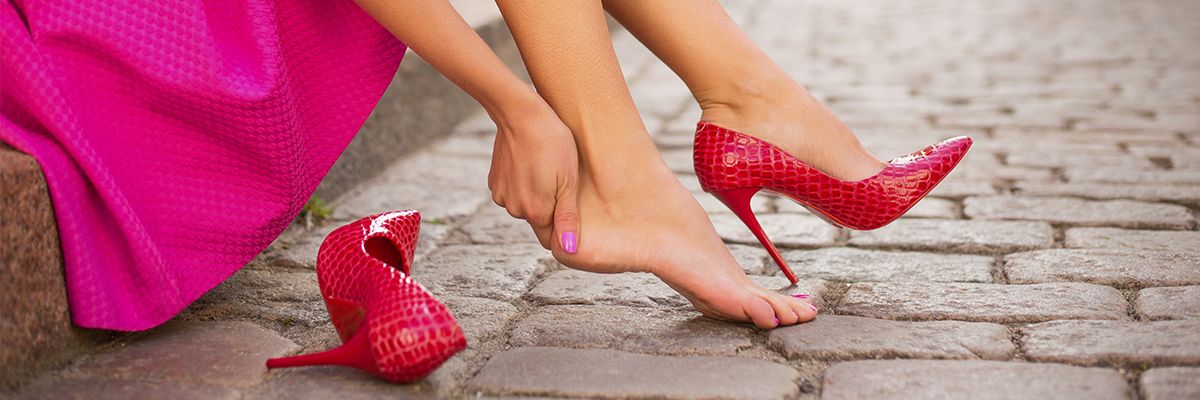
WHY ARE HARMFUL THE HEELS FOR OUR FEET ?
Tips for patients
More than a hundred podiatrists who attended the National Congress of Podiatry of San Sebastian decided to " remove your shoes " as a symbolic gesture of protest against the imposition of heels and in defense of podiatric health. The issue has gained currency in recent months with the gesture of Julia Roberts descalzándose on the red carpet of Cannes or the image of the feet bloodied from a waitress whose boss forced him to wear high heels. The podólogas gathered in Donostia decided to make this gesture against the imposition or "recommendation" of etiquette and protocol , especially " bleeding " when linked to a work environment 8 hours a day working on heels.
STUDIES SHOW HOW DAMAGING HEELS
Scientific studies show that when we are barefoot on the floor 75% of the weight is borne by the heel and the forefoot 25%. The heel is shaped as a support system while the forefoot has a dynamic function, not support. This is manifested in the architecture of the foot: wide and short in the heel and longer and narrower in the forefoot bones bones. As heel height increases, the percentages vary. Thus, with a heel of 3-4 cm heel and only it supports 50% by weight and 50% forefoot. As the heel increases, the weight is supported forefoot. Quantified platform pressures, the burden is reversed (75% in the forefoot and rearfoot 25% from the 6-7cm).
But not only the height of the shoe heel is the problem by abnormal weight distribution: Another feature not suitable for this type of shoe is the breadth thereof, called stilettos (stiletto) has a contact surface very small.
A comparative commissioned by the General Council of Associations of Podiatrists podiatry evidenced Roberto Pascual. The verification was a woman of 51 kilos with a sports type shoe heel height 0 cm with flexible soles (non-specific footwear of any sports activity that have become so fashionable) and a shoe stilettos 10 , 5 centimeters. Comparative evidence that the contact surface is reduced to less than half (71 to 34 centimeters). The lower support surface are greater localized pressures.
Moreover, the shoe heel with the load in the forefoot from 33 to 83%, thus the maximum pressure nearly triples and mean pressure, more significant fact is doubled. This data, objective and quantifiable, implies the presence of pain at the forefoot, called metatarsalgia, typical of the misuse of this type of footwear. The clinical variety of metatarsalgias (Subcapital bursitis, antecapital bursitis, predislocación syndrome, perineural fibrosis Morton, intermetatarsal neuritis, stress fracture ...) intervention podiatrist makes it necessary to establish the appropriate diagnosis and, therefore, a personalized treatment .
Source: El Blog del Podologo
RIVERA FOOT & ANKLE: At Orlando H.Rivera DPM, our priority is to deliver quality care to informed patients in a comfortable and convenient setting. When you have problems with your feet, you need to turn to a podiatrist who listens and responds… an experienced doctor who knows the field and can effectively diagnose and treat your needs… a friendly physician who counsels you on the best ways to maintain and improve your health. Our physician(s) meet all these criteria. Plus, you benefit from a dedicated team of trained professionals who give you the individualized attention you deserve.

Tips for patients, heeled shoes
Foot and Ankle, Dr. Orlando Rivera, Advanced Foot & Ankle Specialist, Foot and Ankle Podiatry, Houston Foot & Ankle Surgical, Treatment of Foot and Ankle, Foot & ankle specialists, Podiatrist in houston, podiatrist in houston, Orlando H.Rivera DPM, Houston Foot Doctor, Foot and Ankle Surgeon Houston, Ankle and Foot Specialist Houston, Podiatrist Houston, Foot Pain Houston.



